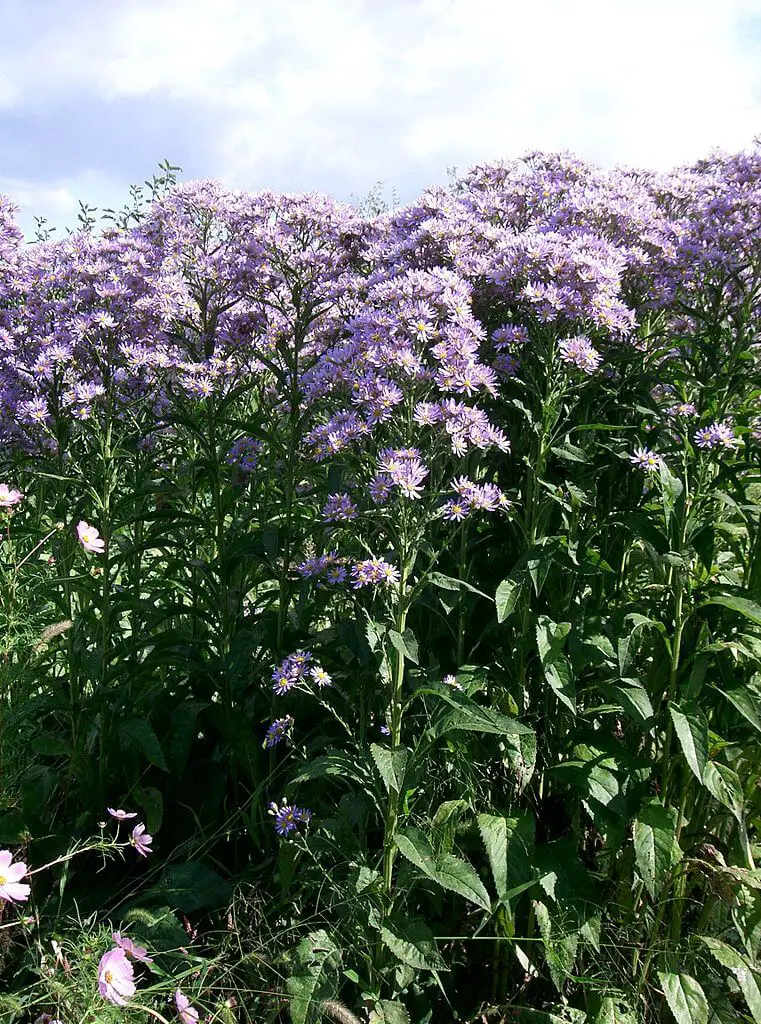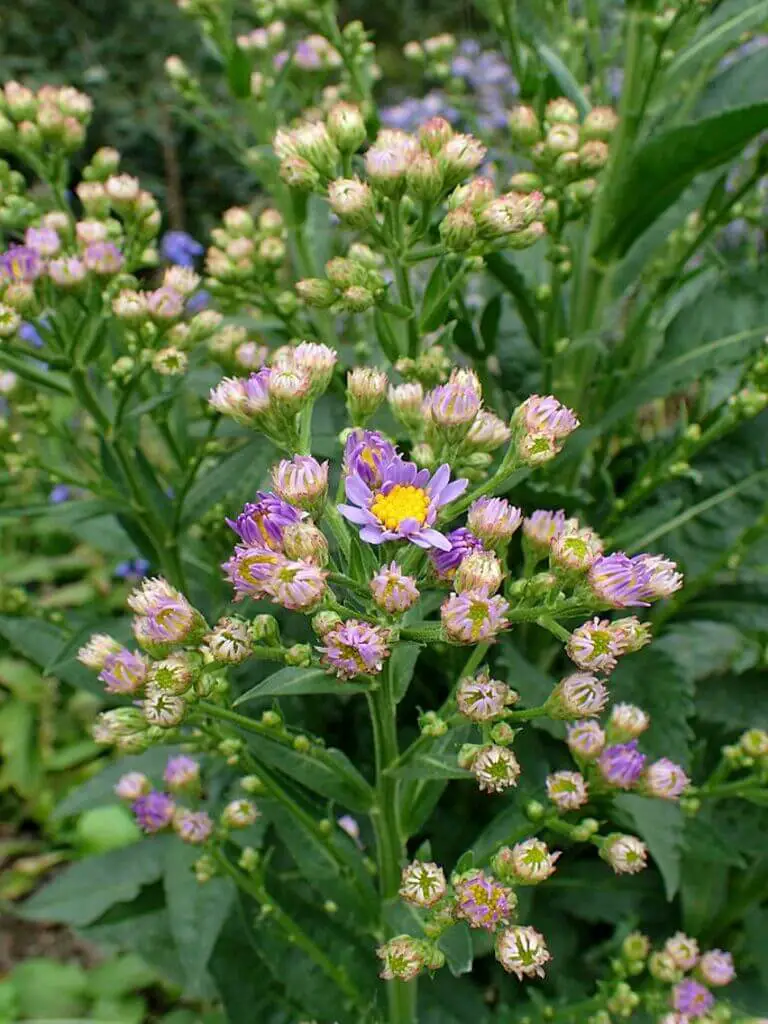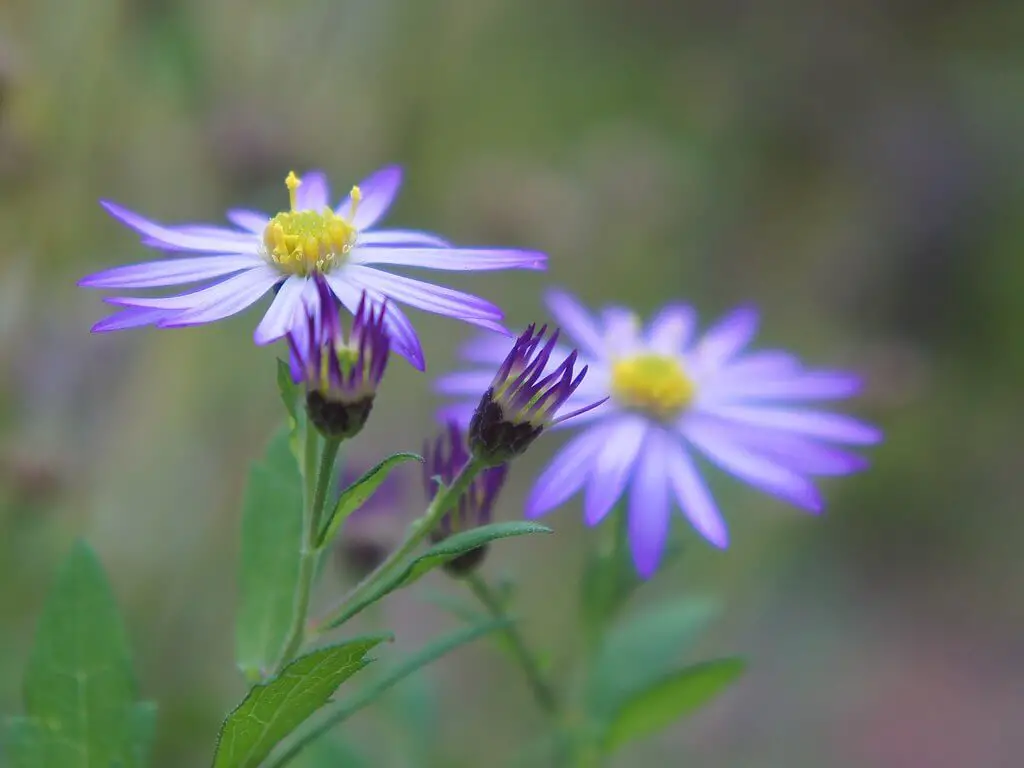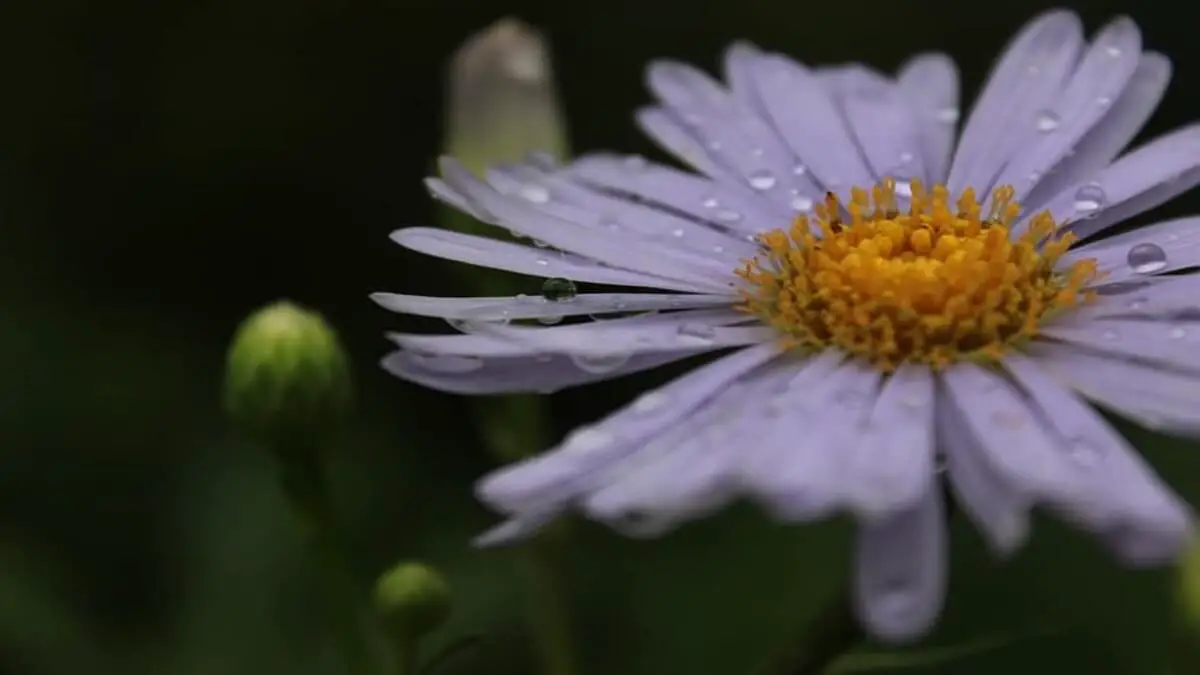How to Grow Aster Tataricus (Tatarian Aster) in Gardens
Aster tataricus (Tatarinow’s aster) belongs to the Aster genus in the Asteraceae (flowering plants) family. This large family includes sunflowers, daisies, and chrysanthemums.
Aster tataricus is a Siberian native plant. It is considered invasive in some parts of the mid-western and eastern US states. This plant grows aggressively and neutralizes effectively in most of the soil types. It blooms beautiful lavender-blue flowers with yellow centers.
This article focuses on growing aster tataricus (Tatarian Aster) in the garden, caring, and uses.
Its dwarf cultivar, aster tataricus ‘Jindai’ is famous for its cute and tiny flowers. In fact, it has identical characteristics to the parent, except the size. Experts first documented this variety in Tokyo’s Jindai Botanical Garden in Japan.
It is most likely that the name has its origin from Tartarian lands and dates back to the thirteenth century. In fact, this was the era of Turkish-Mongolian Tartars, particularly Genghis Khan. You can still find his descendants living in Tatarstan, Russia.
Table of Contents
Description of Aster Tataricus

Photo by GFDL (Wikimedia Commons) (CC BY-SA 3.0)
Aster tataricus has self-supporting, upright stems. Normally, the foliage grows densely packed at the bottom portion of the stems. The leaves have a paddle shape. They usually grow about 2 feet long at the bottom portion of the stem. They gradually get smaller in length as they approach the top portion of the stem.
Normally, the beautiful flowers grow an inch in diameter. The size may vary a bit depending on the region and environment. The lavender-blue rays sprout out of the central disks that are golden yellow in color. These beautiful wide rays develop turned upwards
The blooms form clusters, usually flat-topped. However, most other traditional asters have needle-like rays and groups conically. New England aster is the best example.
Generally, this plant can grow six feet tall and spread about three feet wide. The new stems start developing from early spring itself. However, the blooming seasons last from September to frost. The beautiful flowers bloom in abundance. The blooms may spread and scatter throughout the surroundings if you leave them undisturbed.
In spite of having a beautiful appearance, this is a tough plant. It is resilient to different weather conditions, diseases, and pests.
Propagating Aster Tataricus (Tatarian Aster)

Photo by SB Johnny (Wikimedia Commons) (CC BY-SA 3.0)
To beautify your landscape, you can grow aster tataricus in four different ways.
1.) Seeds
2.) Cutting
3.) Divisions
4.) Purchasing live plants from nursery
Seeds
Start the planting process preferably in spring. To speed up the germination process, pre-chill the seeds for about two weeks. Select a spot that receives full sunlight and has well-draining soil.
After that, scatter the seeds on the ground surface, under the cold frame, and cover them with a thin layer of soil. Make sure to fertilize the soil before sowing.
You can expect germination in about two weeks’ time (at 20-degree centigrade average). When you notice a set of true leaves, transplant them into containers, or grow them on the ground surface itself.
Water the arrangement regularly at initial stages, then gradually decrease watering. Do not overwater. Also, fertilize the soil periodically. In the case of container-grown plants, make sure to amend the soil with a good quality potting mix before transplanting.
Normally, the new plant from the seed does not replicate the parent identically. So, seed propagation of aster tataricus is usually not preferred.
Cuttings
Generally, it is preferable to start this process during springtime. Cut out the individual shoots when they grow 10 -15 cms tall using good quality shears. At this stage, they may have developed strong roots underground to stimulate fresh growth.
Clean out 2/3 of the stems’ bottom portion by removing leaves and other matters. Gently dip the bottom of the stem in rooting hormone. Then plant them in individual containers.
Make sure the containers have an adequate draining facility. Mix good quality potting mix to the container soil, before planting the cuttings.
Place the container arrangement in light shade under a cold frame or greenhouse for a few weeks. After the stems root enough, transplant them outdoors in summer. Make sure to fertilize the soil periodically and water adequately in the initial stages.
Divisions
Generally, the division is one of the easiest and successful methods. Start the process during spring or autumn. Slice the rooting system down with preferably a good shovel.
Normally, you can plant the larger divisions directly into permanent positions. In the case of smaller divisions, first, grow them up in containers under a cold frame.
Wait for a few weeks until they establish themselves with fresh new growth. Then, transplant them in their permanent positions preferably during summer.
Purchasing from Nursery
This is the easiest method to grow aster tataricus (Tatarian Aster). Just purchase them from a nursery or through online stores. Grow them in the same containers they came with or transplant them to their permanent outdoor locations.
In any case, it is always advisable to use good quality garden gear to perform any garden-related activity.
General Caring Aster Tataricus (Tatarian Aster)

Photo by Kenraiz (Wikimedia Commons) (CC BY-SA 4.0)
Generally, the ideal season for the propagation of aster tataricus (Tatarian Aster) is early spring. Select a location where there is direct and abundant sunlight. This plant can also tolerate partial shades.
This plant grows well in many varieties of soil. However, it may grow shaggy and may need staking, if the soil is too rich. Make sure the soil drainage is adequate.
Normally, these plants and most of their varieties spread at least three feet. So, make sure to space the plants upwards of three feet, to facilitate the airflow. This helps to prevent fungal disease in plants.
During the initial stages of planting, maintain even moisture. Once the plants establish themselves, they can survive from occasional rainfall. You just have to water them during prolonged dry climates or droughts. Naturally, these plants are fairly drought tolerant.
aster tataricus is a vigorous grower. It spreads through its underground rhizomes and also by self-seeding. It also neutralizes itself quickly adapting to the new environment.
Amend the soil with essential nutrients before planting. Fertilize the soil regularly after planting. In this way, you can ensure the plants’ healthy growth.
Maintaining Aster Tataricus (Tatarian Aster) H2:
Once established, this plant naturally becomes self-sufficient. However, you may need minimum maintenance to prevent its vigorous growth.
These plants exhibit self-seeding characteristics, in addition to expanding through rhizomes. Hence, they can spread vigorously. This may prove to be a nuisance to some, especially to those who live in ‘structured environments.
To prevent this vigorous growth, simply remove the clusters of dead flower heads from the plants. Do this before the seeds drop out of the pods.
In addition, you also have to prevent the expansion of the plants through rhizomes.
During every spring, dig around the foliage perimeter. cut down and remove the expanding rhizomes and other debris. This prevents the expansion of the plants through rhizomes.
Additionally, you also can divide the rhizomes during spring, once every three years. Remove the additional sections and plant them elsewhere or give them away.
To maintain a bushy, compact shape, prune the plants in summer. Do not prune more than 2/3 of the plant.
Make sure to remove the weeds and debris as early as possible from the surroundings. This minimizes competition for water, prevents pests and other diseases. In addition, this also increases the airflow around the plants.
Cultivars of Aster Tataricus
There are two widely known dwarf or smaller-statured cultivar varieties of aster tataricus (Tatarian Aster). They also are known as Tatarian daisy flowers.
Aster Tataricus ‘Jindai

Photo by David J. Stang (Wikimedia Commons) (CC BY-SA 4.0)
Normally, this Herbaceous aster variety grows 3- 4 feet in height and spreads out 2-3 feet wide. The compact size of this variety makes it suitable for borders, beds, and for growing in small containers (at least 3.5 feet diameter).
In addition, this variety does not require staking or pruning periodically, most of the time. Hence, if you opt to grow comparatively low maintenance plants, consider this variety.
Aster Tataricus ‘Blue Lake

Photo by T.Kiya (Wikimedia Commons) (CC BY-SA 2.0)
Generally, this Herbaceous aster variety grows only 2-3 feet tall. It blooms beautiful small lavender-blue flowers. Aster Tataricus ‘Blue lake variety is also resistant to deer.
Due to its sub-compact size, it suits well for borders, beds, and to grow in small compact containers. It can add beauty to your cut flower gardens as well.
Pests and Diseases
Generally, aster tataricus (Tatarian Aster) is not likely to suffer from pests or diseases. Healthy plants can even resist mild infections.
However, some fungal diseases like verticillium wilt, fusarium, and powdery mildew commonly affect asters. In addition, snails, slugs, and nematodes may occasionally bother asters.
You can prevent these conditions by planting them in well-draining soils. Always facilitate airflow between plants by pruning them periodically.
In spite of all the efforts, if you find fungal infections, treat them with good quality fungicide. You can also use diatomaceous earth to treat root infections.
aster yellow is a bacterial disease. It can ruin the plants altogether. This disease spreads through insects such as aster leafhopper. aster yellow, in common is an incurable disease.
Always grow these plants in a sunny location and in well-draining soil. Provide adequate airflow passage. Fertilize the soil periodically. Remove the dead heads and other debris from the surroundings. In this way, you can grow healthy plants and prevent most of the diseases.
Uses of Aster Tataricus (Tatarian Aster)
Culinary uses

Photo by National Institute of Korean Language (Wikimedia Commons) (CC BY-SA 2.0 KR)
In Korea, this plant is known as ‘gaemichwi (개미취). Most Korean consumers use these plants in Korean cuisines as ‘chwinamul (fragrant leaf vegetables).
Medicinal usage
In traditional Chinese medicine, the aster tataricus (Tatarian Aster) is one of the main constituents among the 50 fundamental herbs. They call it ‘Ziwan.
Modern studies indicate its ability to produce an “anti-neuroinflammatory effect”. This is useful for treating patients suffering from neurodegenerative diseases.
You can find a number of aster tataricus herbal medicines on the market. But they should be taken in as recommended by the certified herbalists.
Similar Posts
How to Grow Mulberry Bushes
How to Grow Japanese Plum Trees (Loquat Trees)

